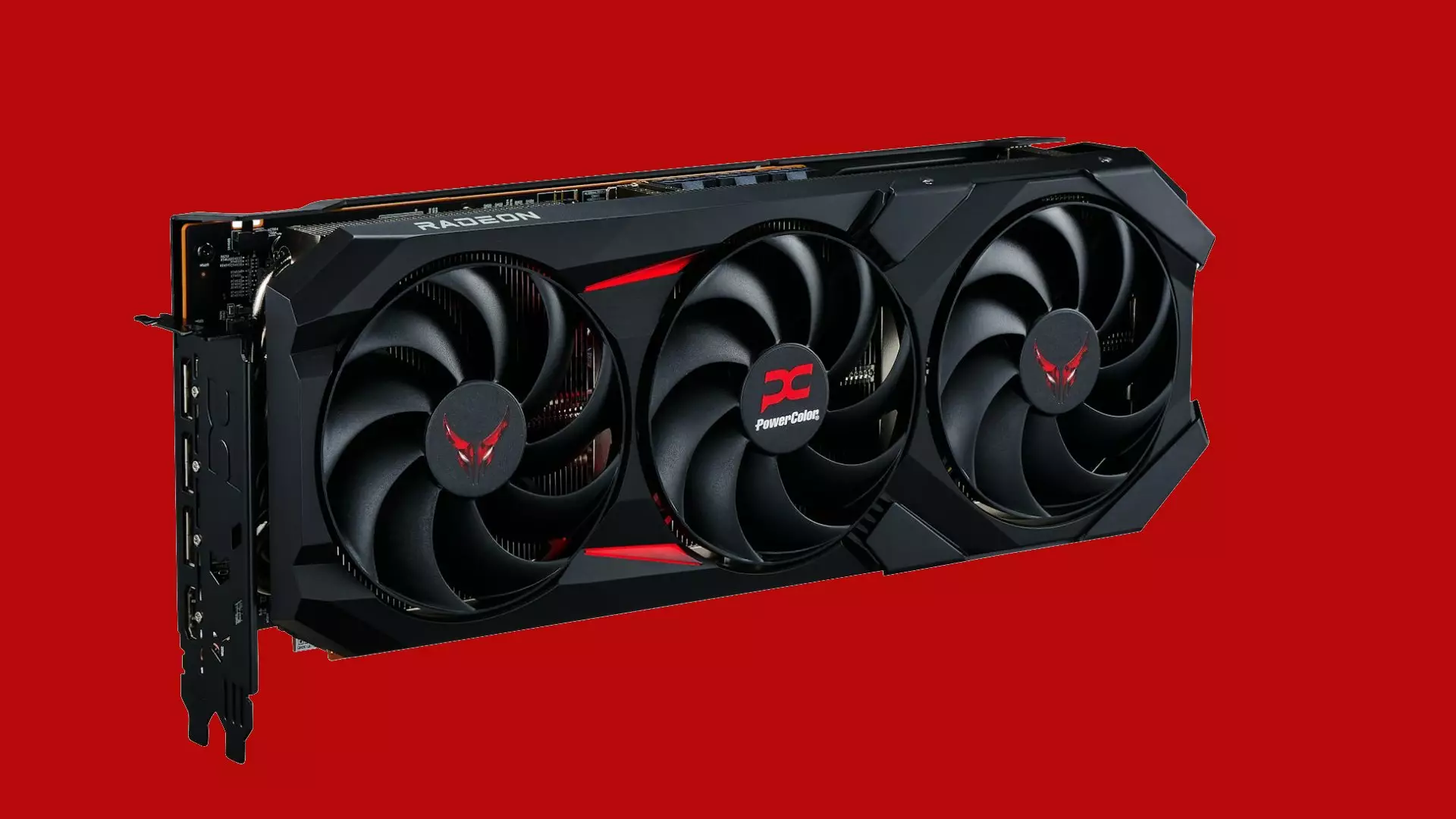Recent revelations surrounding the AMD Radeon 9070 GRE by Powercolor have stirred excitement within the gaming community. Clear images of the graphics card have surfaced, showcasing a design reminiscent of its sibling, the RX 9070 XT. As new technology continues to evolve, AMD’s latest offering is poised to make waves, particularly within the Chinese market where it is rumored to launch initially. However, there are whispers that it may not remain confined to China, hinting at potential global availability in the near future.
Technical Specifications: What to Expect
The RX 9070 GRE is anchored on the AMD Navi 48 architecture, sharing its core technology with the RX 9070 and RX 9070 XT. However, the GRE variant features a reduction in capabilities, reportedly housing 3,072 Stream Processor cores compared to the 3,584 in the standard model and 4,096 in the XT version. This modification in architecture positions the GRE as a more budget-friendly alternative while tailored for gamers who may not require top-tier performance. Additionally, the memory configuration includes a 192-bit memory bus paired with 12 GB of GDDR6, marking a step down from the 256-bit bus and 16 GB found in its more powerful counterparts.
The pricing strategy seems clear: AMD aims to attract gamers who desire high-quality graphics without the premium price tag associated with the higher-end models. With the RX 9070 and RX 9070 XT priced at $549 and $599 respectively, the GRE is speculated to come in significantly lower, potentially reshaping the market landscape.
Potential Market Impact and Competition
Market analysts have speculated that the RX 9070 GRE’s entry could directly challenge Nvidia’s recently launched RTX 5060 TI variants priced at $379 for the 8 GB version and $429 for the 16 GB option. While raw raster performance may favor the Radeon, prospective buyers will need to weigh these benefits against the enhanced ray-tracing capabilities and rich feature set offered by Nvidia. Their cutting-edge technologies like DLSS 4 and multi-frame generation add layers of complexity to the decision, highlighting the growing importance of features beyond mere performance metrics in the consumer’s choice.
Furthermore, AMD’s approach of potentially limiting the GRE to China initially raises questions about its broader strategy. The absence of official announcements regarding an international launch can lead to speculation. However, with images leaking and information trickling out, the anticipation for an official release seems palpable.
Understanding the Audience: Is the GRE for You?
The RX 9070 GRE appeals primarily to a segment of the gaming community that finds itself caught between entry-level and high-end offerings. It provides a compelling alternative for players aiming for decent performance without the financial strain that often accompanies top-tier graphics cards. However, for enthusiasts or those primarily focused on ray-traced graphics, the GRE might fall short of expectations, especially under demanding gaming environments.
As the gaming industry progresses, understanding the needs and wants of the consumer base becomes increasingly crucial. The emergence of mid-range cards like the RX 9070 GRE allows manufacturers to cater to a wider audience, a strategy that can only fortify AMD’s position in a competitive market.
Looking Ahead: The Future of Gaming Graphics
The introduction of the RX 9070 GRE serves as a timely reminder of the rapid evolution of graphics technology and the necessity for manufacturers to adapt to consumer needs. As the debate between performance and affordability continues, consumers are witnessing a diversification of options that meet a variety of gaming requirements.
While the GRE may not reach the heights of its RX 9070 and RX 9070 XT siblings, it recognizes the shifting dynamics in consumer preferences and the importance of striking a balance between performance and price. As the upcoming launch approaches and more details emerge, gamers and industry watchers alike will be keenly observing how this new card will shape the GPU landscape. Each new offering challenges both AMD and Nvidia to push boundaries, ensuring that the future of gaming graphics remains bright and accessible.

